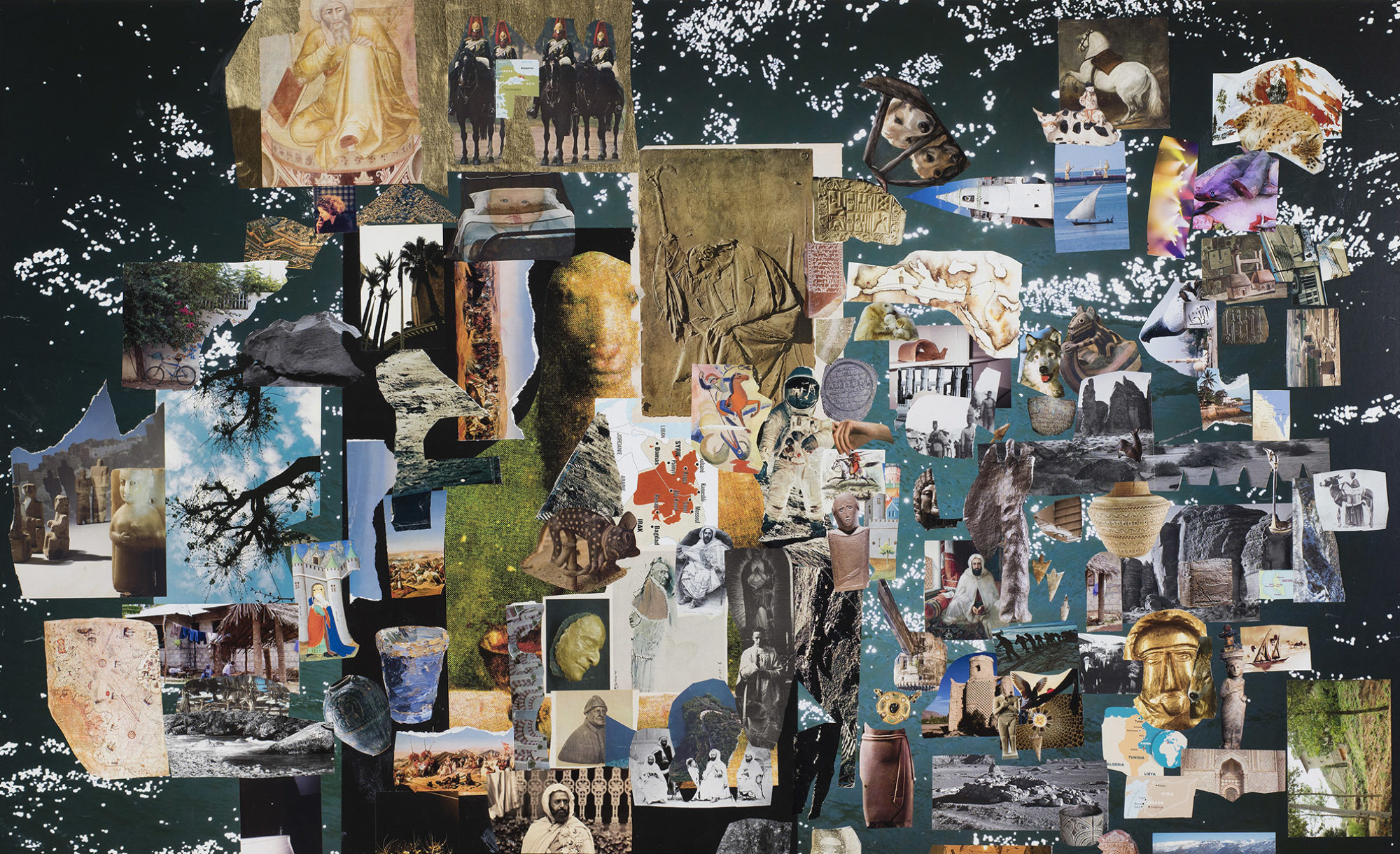by Negar Azimi
BABYLON BABYLON
I announce your resurrections
and your death.
— from The Beirut-Hell Express
Let’s begin with the legs. They are thick, bowed, cumbersome things—like the crusty paw of an elephant or the trunk of a vast tree ringed by time. Their heads are attenuated, leprous and shriveled, as if battered on the field of battle, or simply pinched between someone’s fingers for too long. Sometimes, there’s no head at all; the familiar ball that once balanced atop a thin line atop a torso seems to have rolled right off. Bodies: they slump and sag and bend and bob.
Time is the great conceit of the sculptures of Simone Fattal. Kneaded clay suggests the repeated touch of a human hand, but also the ravages of time. Figures look as old as the earth and yet they breathe. “The dead are coming back in order to fight again” reads a line from The Beirut-Hell Express, a poem from 1983 by Etel Adnan. The dead speak to us, too: I once was a warrior. I once was a father. I once was master of this land. I once was I once was echoes again and again. Their grandiloquence is shabby.
But then, they never really did die, did they? Fattal’s history is a temporal mishmash, a reckless continuum in which time and place are leveled, where the ancients mingle with the moderns. This mishmash is evident in her collage works, too. Day after day, she cuts up little pieces of magazines, newspapers or advertisements that have caught her eye, squirrels them away. They come back—yes, as if from the dead—when they must. Their destination is the picture plane, a place that evokes Andre Malraux’s wistful, unrealized Museum Without Walls. Here is Merce Cunningham and Pina Bausch. Here are the faces of Saddam Hussein’s sons in law, creepily frozen in death. Here are ancient Sumerian and Babylonian forms as rotted statuary, an ad for a shiny BMW, a Brancusi sculpture, a photograph of the earth. The artist’s own face might figure in, as well, for she too is a party to this psychic mingling. She, too, is a party to this history.
Hers is a vision of a world in which there is no “pure” and there is no original. The traces of other people’s wars, loves, and lies are inscribed on our bodies and in our minds. As the products of everything that came before us—Walt Whitman said as much when he said “we contain multitudes”—we are the tea stain on a book, the scar that won’t heal, the false memory born of a photo we once saw in a magazine. Our constitutions are a mysterious thing.
It is fitting, then, that Fattal’s works—which span painting, sculpture, collage, and books—bleed one into the other. They shape-shift as one burns bright and another dims, each form inflected by a moment in a life lived. There were the childhood visits to Palmyra, in Syria, where Fattal once wandered among soaring Seleucid and Roman ruins. There was the publishing house she launched upon being displaced by the Lebanese Civil War to seaside California. She called it Post-Apollo, after the moon landing, and with it she made words dance. And there was the fateful encounter with clay that led her to formulate a man with two overlong, elephantine legs. She called him Adam and he was familiar. He was the first man. But he was every man, too.
